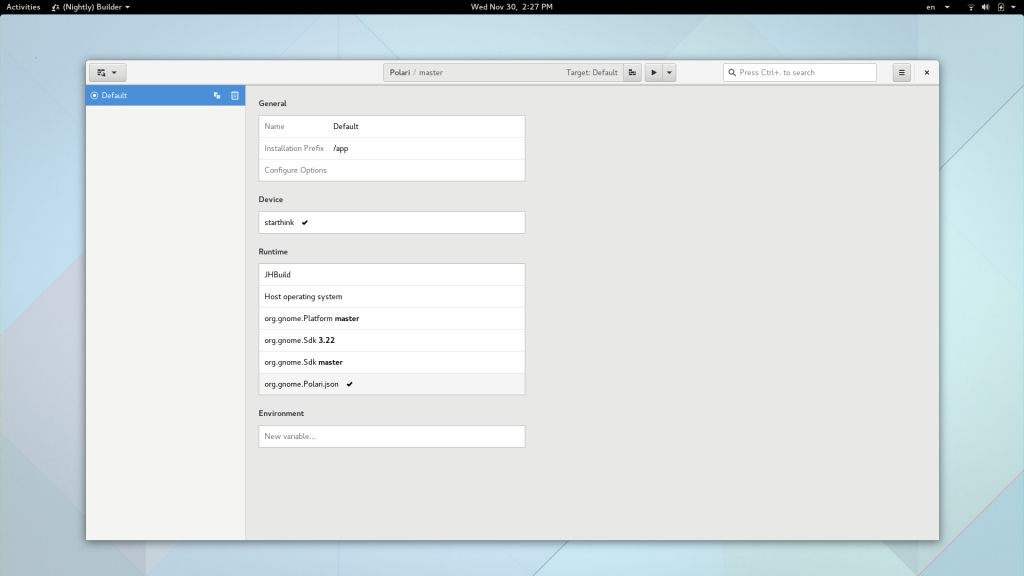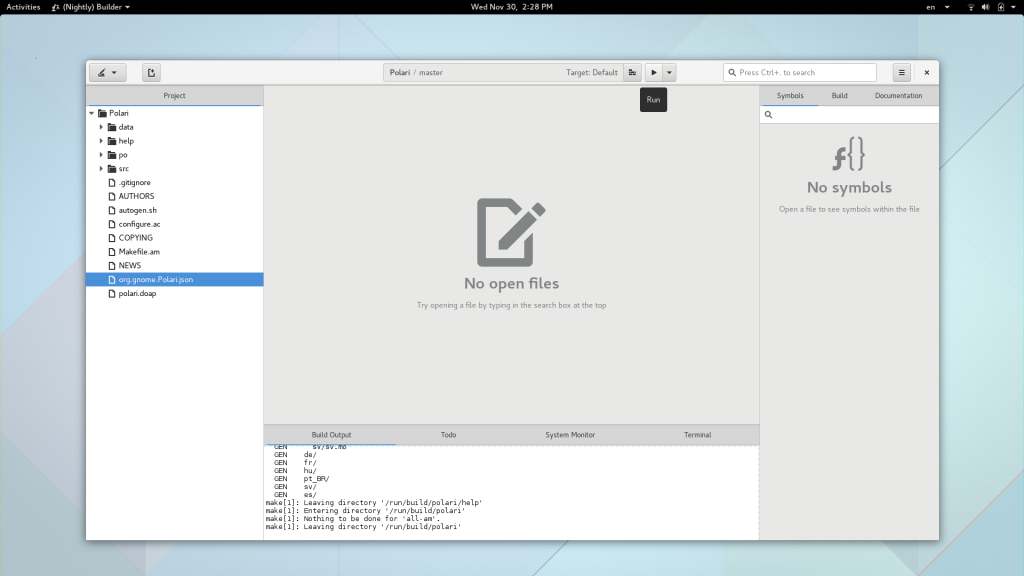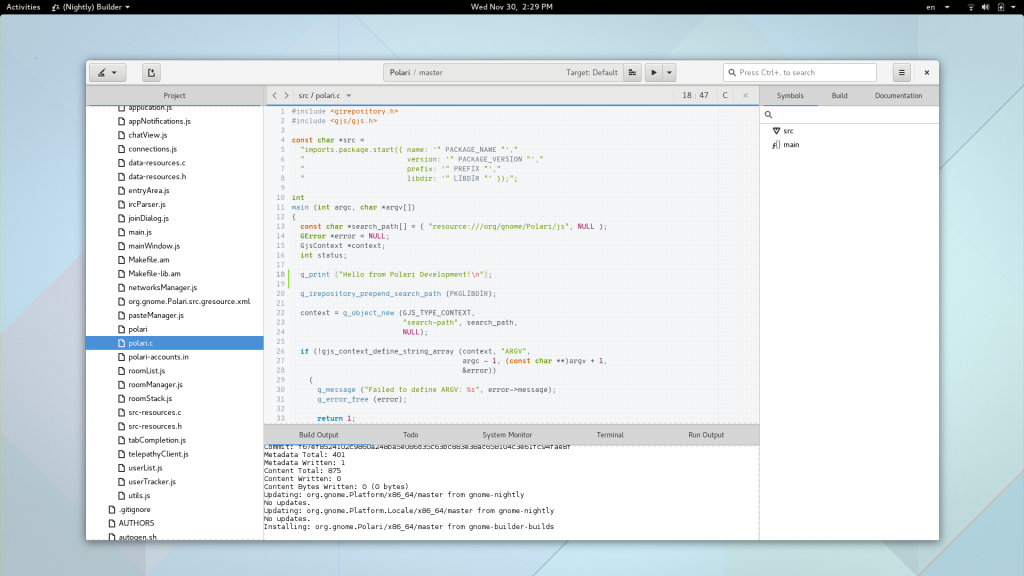I’ve been rather quiet recently working on new features for Builder. But we managed to just release Builder 3.22.3 which is full of bug fixes and a really new important feature. You can now meaningfully target flatpak when building your application. Matthew Leeds has done this outstanding work and it is really going to simplify how you contribute to GNOME applications going forward.
I’m really happy with the quality of this feature because it has shown me where our LibIDE design has done well, and where it has not. Of course, we will address that for 3.24 to help make some of the UI less confusing.
Without further ado, how to clone, build, run, and hack on Polari without so much as a toolchain installed on your host system. The only prerequisite is to get GNOME Builder 3.22.3 from the GNOME flatpak repository (or your distribution if it is up to date).
Edit: Your system might require the installation of flatpak-builder if it is in a separate package (such as on Fedora 25).
# Get things ready on Fedora 25
sudo dnf install flatpak-builder# Download GNOME's nightly SDK for development.
# We'll automate this for GNOME 3.24.
flatpak --user remote-add gnome-nightly \
https://sdk.gnome.org/gnome-nightly.flatpakrepo
flatpak --user install gnome-nightly org.gnome.Sdk master
flatpak --user install gnome-nightly org.gnome.Platform master









